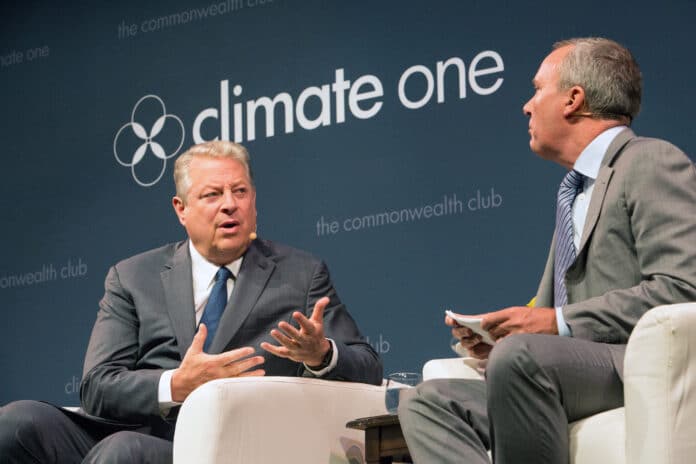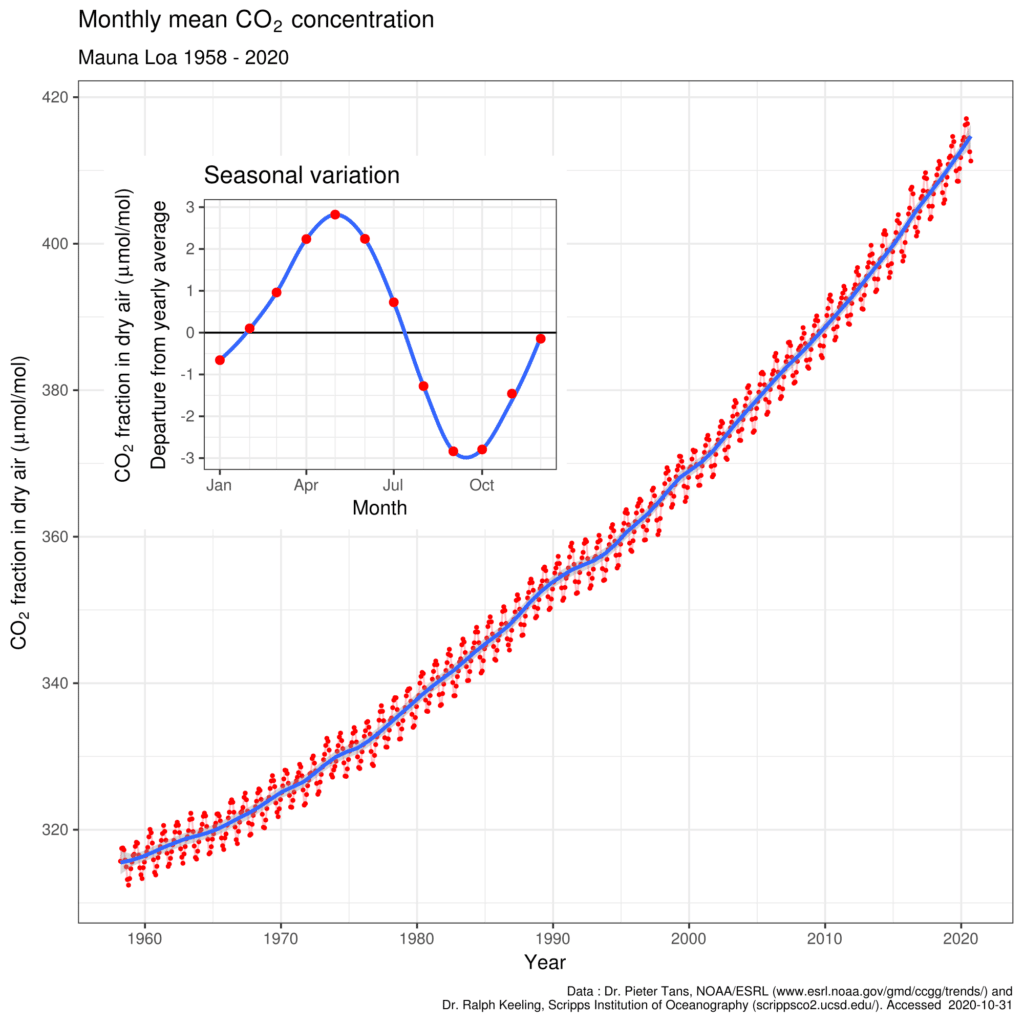
Linkbox om Al Gores dokumentarfilm fra 2006 om den globale opvarmning
Links on the Al Gore documentary from 2006 on global warming
(Tidsskriftcentret/Socialistisk Bibliotek, december 2009)

En ubekvem sandhed / An Inconvenient Truth
Al Gores dokumentarfilm fra 2006 om den globale opvarmning vandt Oscar som bedste dokumentarfilm, og har fået stor udbredelse og betydning i debatten om global opvarmning og konsekvenserne.
The Academy Award winning Al Gore documentary has reach a mass audience, and has been central to the discusson of global warming and its consequences.
Se også / See also: Klimaet og den globale opvarmning / Climate & global warming (Socialistisk Bibliotek)
Dansk/skandinavisk:
Al Gore-kritikere med is i maven: ‘ingen problemer’. Af Jørgen Steen Nielsen (Information, 15. september 2006)
“En lille kreds af stålsatte klimaskeptikere mobiliserer mod den ny konsensus om truslen mod Jordens klima. Imens smelter isen.
Debatten om Al Gores En ubekvem sandhed (Miljøstyrelsen, 13. september 2006; online på Internet Archive)
“Allerede inden den officielle premiere på “En ubekvem sandhed”, Al Gores film om klimaændringer, har der i debatten i Danmark været fremført en række fejlagtige påstande om såvel filmen som den videnskabelige viden om global opvarmning.”
Ni ubehagelige usannheter. Av Kristin Straumsheim Grønli (Forskning.no, 12. oktober 2007)
“Al Gore er en av favorittkandidatene til Nobels fredspris, på grunn av sitt politiske arbeid i klimasaken. Samtidig, i en britisk rettssal, påpekes ni usannheter i den Oscar-vinnende filmen ‘En ubehagelig sannhet’.”
Bjørn Lomborg griller Al Gore-filmen (Ekko, nr.34, august 2006)
“Bjørn Lomborg anmelder i EKKO miljødebat-filmen En ubekvem sandhed. ‘Misvisende’, lyder hans dom.” Se Lomborgs bog Køl af (Lindhardt & Ringhof, 2007) for mere Al Gore-kritik.
In English:
Climate Crisis. Al Gores site med materiale om filmen.
An Inconvenient Truth (Wikipedia.org)
Bjørn Lomborg versus Al Gore: Comparison of error counts. By Kåre Fog (Lomborg-Errors Web Site)
“It seems timely to make an overview of how many errors are actually found in Al Gore’s film, and how does the number of such errors compare with the number of errors in Lomborg’s books, judging by the same standards.”
Al Gore’s An Inconvenient Truth and its skeptics: a case of environmental nostalgia. By Robin Murray and Joseph Heumann (Jump Cut, No.49, Spring 2007)
“We argue that Al Gore’s film mainly succeeds not because of its predictions but because of the eco-memories it evokes.”
‘Red Herring’: Al Gore, the climate sceptics and the BBC. By David Cromwell and David Edwards (Medialens, October 17, 2007; online at Internet Archive)
An Inconvenient Truth: a warning to the world about climate change (Socialist Worker, UK, Issue 2019, 23 September 2006)
“Al Gore’s documentary about climate change is very important, but has political limitations, argues Martin Empson.”
The inconvenient truth about Al Gore (Socialist Worker, US, Issue 593, June 16, 2006)
“Lance Newman looks beyond the image-polishing of Al Gore’s new movie – and explains what needs to be done to save the Earth.”
Al Gore’s An Inconvenient Truth: political posturing and the Democratic Party. By Joe Kay (World Socialist Web Site, 15 July 2006; online at Internet Archive)
“The real ‘inconvenient truth’ about Gore and global warming is that the political perspective he embodies is utterly incapable of dealing with the problem.”
The elephant in Al Gore’s lecture room. Review by Penny Cole (A World to Win, 22 September 2006)
“The film is gripping viewing, setting out in powerful graphic style, the reality and urgency of the climate crisis facing humanity … [and it] is particularly successful in nailing the lie that there is scientific disagreement about the causes and seriousness of global warming.”
Al Gore, the origins of a hypocrite. By Jeffrey St. Clair (CounterPunch, March 3/4, 2007)
“In Gore’s supposed devotion to the environment there has always been a vast rift between stirring proclamation and legislative reality.”

This curve is known as the Keeling curve, and is an essential piece of evidence of the man-made increases in greenhouse gases that are believed to be the cause of global warming. The longest such record exists at Mauna Loa, but these measurements have been independently confirmed at many other sites around the world [1].
The annual fluctuation in carbon dioxide is caused by seasonal variations in carbon dioxide uptake by land plants. Since many more forests are concentrated in the Northern Hemisphere, more carbon dioxide is removed from the atmosphere during Northern Hemisphere summer than Southern Hemisphere summer. This annual cycle is shown in the inset figure by taking the average concentration for each month across all measured years.
The red curve shows the average monthly concentrations, and blue curve is a smoothed trend.
The carbon dioxide data is measured as the mole fraction in dry air. This dataset constitutes the longest record of direct measurements of CO2 in the atmosphere (data up to december 2018), 6 January 2019.

































